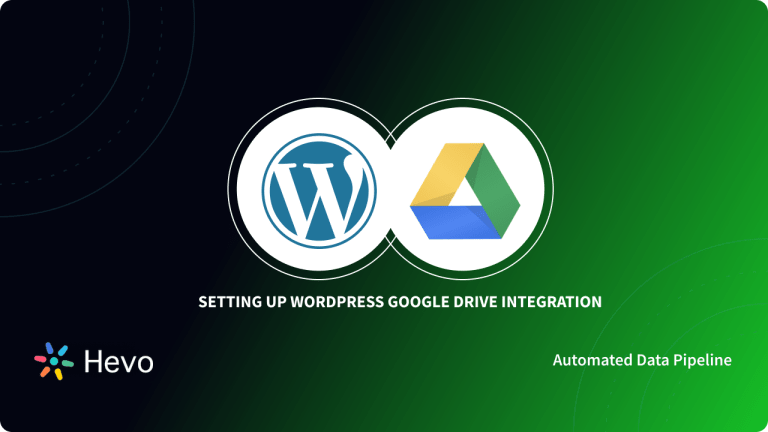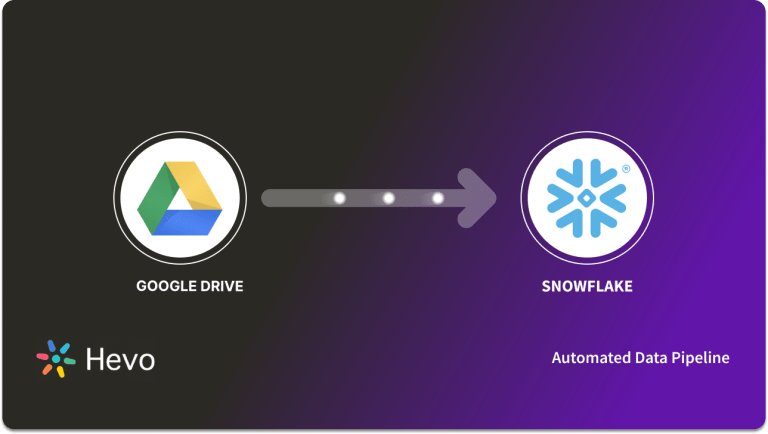It is no secret that gathering input from customers, workers, and the future clientele is critical to laying a solid foundation in delivering better business services. It is a tedious job to collect data, standardize processes, and establish collaborative workflows manually. To offset these today, we have organizational tools like Google Drive Suite and Airtable. Businesses often tend to integrate them for harvesting the best out of these platforms.
Airtable Google Drive Integration allows you to create Airtable databases directly from Google Drive, also you can create shortcuts to Airtable bases from Google Drive. You will also be able to sync Airtable Google Drive together.
This guide will help you to understand how to integrate with simple follow-through steps.
Table of Contents
Prerequisites
- Basic Understanding of Database and Spreadsheets
Introduction to Airtable
Airtable is an online platform for creating and sharing relational databases along with the assigned tasks. The user interface of Airtable is simple, colorful, and user-friendly that you to create a database in minutes. It can easily manage work, track and organize inventories, plan an event, and much more. Airtable is highly customizable that allows to store, organize, and collaborate with information about anything that ranges from employee records, business tasks, and product inventories. It also comes with many templates to choose from and can handle nearly any project.
Airtable Integrations
The Airtable has strong Remote Collaboration and Project Management Tools that make it a vital platform for many organizations. Airtable possesses built-in support for many popular apps and a robust API to integrate with other platforms like Google Drive, Asana, Github, Zendesk, Slack, and Wunderlist. By integrating Airtable with other platforms and apps, users can automatically move information back and forth between them by connecting the bases. Apart from that, Airtable Integrations can help you automate data input and output points to create Data Pipelines.
Airtable offers many forms of Integrations:
No-code Integrations: These pre-built Airtable services allow rapid configuration and customizability that requires no coding knowledge. These includes:
- Native Integrations
- Partner Apps
- Third-Party Integration
- CSV Import/Export
- Native Integrations: It provides users with the Integration capability to directly link from the main Airtable product.
- Partner Apps: These are built-in apps designed with Airtable to deeply integrate that combine the power of Airtable with their respective products. These currently include apps from Formstack, Loom, Miro, Pexels, and Typeform.
- Third-Party Integration: Airtable has built-in connections to thousands of services through Integration platforms as a service (iPaaS) connectors offered by third-party providers. Some of the examples include Zapier, Integromat, Workato. These services require a platform account and configuration on their platform, but they all are relatively simple to set up.
- CSV Import/Export: This allows you to import data into an existing database through CSV file import.
Low-code Integrations: These services enable users to create highly customized Integrations with the assistance of various development resources.
- Scripting App
- Automation Scripts
- API/External System
- Custom Apps
- Scripting App: With the scripting app, users can develop and run JavaScript code that interacts with Airtable bases. They can also perform external API calls to specific services using built-in JavaScript libraries.
- Automation Scripts: These allow automatic actions based on specific Airtable event triggers.
- API/External System: Users can create apps that perform triggered or scheduled tasks hosted on external infrastructure like a local machine, AWS lambda, etc., by interacting with the Airtable REST API.
- Custom Apps: Users may utilize the Airtable Apps SDK to create a customized React.js app. It allows teams to create a custom interface through which they may interact.
In addition to the above, the Enterprise version of Airtable allows Integration via Enterprise API, Metadata API, and webhooks.
Introduction to Google Drive
Google Drive is a free Google service (free up to 15 GB space) that allows you to save files to the cloud and access them remotely with an internet connection. You can also integrate Google Drive with other Google products to create documents, spreadsheets, presentations, and more using free web-based tools. Google Drive is an easily accessible service that helps people on a personal as well professional level to manage and share files.
Organizations use Google Drive because of its user-friendly interface, reliable and secure service at an affordable price. It integrates with your Gmail account, which helps you effortlessly manage the workflow with other teams and members.
Steps to Set Up Airtable Google Drive Integration
- Step 1: Connect Airtable Google Drive
- Step 2: Creating Automatic Sync Between Airtable and Google Drive
This section will focus on steps to integrate Airtable Google Drive in 2 steps. First, you will connect both the platforms, and then in the second, step you will enable the automated sync between Airtable and Google Drive. The steps are listed below:
Step 1: Connect Airtable Google Drive
Users must connect Airtable Google Drive before creating new bases from Google Drive or sync Airtable to Google Drive.
- Create or log in to your Google Drive account.
- Google Drive Dashboard will appear, now Right-click on the My Drive menu as shown in the image below.
- Click on the More option, then select the Connect more apps option.
- Search for Airtable, then click the blue Install button next to the Airtable app as shown in the image below.
A confirmation dialog will appear after successful Airtable Google Drive Integration that says, Airtable was connected to Google Drive.
Now you can view Airtable as a selectable option in the My Drive menu or when right-clicking on a Google Drive folder. Also, when you choose Airtable from Google Drive for the first time, Google will ask you to provide permission to Airtable. Now you have to grant permission, and then you will be redirected to the Airtable home page, where you will prompt to add a base.
Points to Remember:
These are some important keynotes to remember regarding the Airtable file modifications in Google Drive and conversely:
- The new base created will be untitled in default mode, but you can add a title and customize it.
- The name of the Airtable base will not change if you alter the shortcut name from inside Google Drive. But if you modify the name of the Airtable base from Airtable, the name of the Airtable Google Drive shortcut will change as well.
- If you delete the Airtable base from within Airtable, the respective Google Drive shortcut will not remove automatically.
Step 2: Creating Automatic Sync Between Airtable Google Drive
Go to your Airtable account page to allow automatic synchronization of Airtable Google Drive data. There is a section on your account page where you can manage your Airtable Google Drive Integration.
Check the box to enable synchronization. The most recent timestamp will be shown, along with a clickable link to sync now. Remember that you may only sync once every 10 minutes.
When you enable automatic base synchronization, it will create a folder named Airtable in your Google Drive account on the top-level folder. This folder contains a base shortcut link to every base for which you have access.
Points to Remember:
These are some points listed below to take care of when you delete, replace, rename base from Airtable or Google Drive:
- When you delete a base from Airtable, it will remove the corresponding shortcut from the Airtable Google Drive folder on the next sync.
- If you erase the whole Airtable Google Drive folder, the synchronization process will build a new one and sync it. It happens even if you subsequently restore the previous folder.
- If you move a shortcut out of the Airtable folder while the sync is enabled, it will generate a new shortcut in the Airtable Google Drive folder. It means that there might be several shortcuts to the same base in your Drive.
Integrate Google Sheets and Airtable
One of the commonly integrated Google Drive features with Airtable is Google Sheets. In the following section, we shall also learn more about them in detail.
Google Sheets is one of the widely used Google Drive applications. After Airtable Google Drive Integration, users will have access to Google Sheets features such as built-in formulae, custom reporting, pivot tables, conditional formatting, and visualization tools, which allow them to create dashboards and extract insights from Airtable bases.
The combination can aid in the creation of near real-time status monitors and the immediate identification of any gaps or areas for improvement. It will ensure a solid system for automated organizing and sharing data inputs and outputs. Sharing data has a two-fold benefit: make data available to users that rely on Google Sheets and surmount the Airtable record per base price limits.
Know more about Airtable Google Sheets Integration in simplified steps.
How to Export data from Airtable Base to Google Sheets
There are specific tools that can help you move data between these platforms. Some of them are:
- Airtable Importer: This Google Sheets add-on connects Airtable to Google Sheets for improved reporting and analysis, and it doesn’t require any coding knowledge. You may use Airtable Importer to export data from Airtable to Google Sheets (and vice versa), sync previous data, plan future syncs, set up data refreshes, and more. Note that if you added a new row or made any changes, it will not sync to your Google Sheets immediately. You have to import the entire table again.
- Zapier: Zapier is a work automation application that allows users to integrate Airtable with Google Sheets through a Zap. You may use these Zaps to generate redundant Google Sheets databases or sync between multiple databases. Users cannot copy the whole database; they can only export new records to Google Sheets.
- Coupler.io: Users can use this tool to link Google Sheets with Airtable and several other data sources. It provides users access to real-time data and allows them to plan periodic refreshes and connect their spreadsheets to external applications to create dashboards. Not only does Coupler.io enable generating backups of data in Google Sheets and condenses data from many sources, but it also facilitates custom reporting.
Conclusion
Airtable is a great database platform that can empower businesses with efficient project management. Integration can deliver companies enhanced results with collaboration among vendors and internal teams. In this guide, you learned how to integrate, Google Sheets with Airtable, and about different tools to automate the workflow between Google Sheets and Airtable.
Share your experience learning about the Integration in the comments below!





